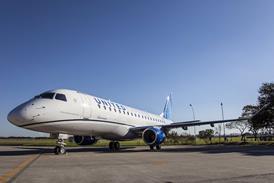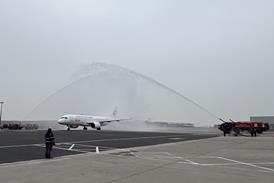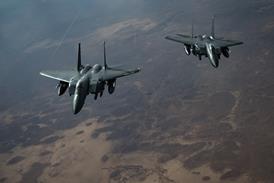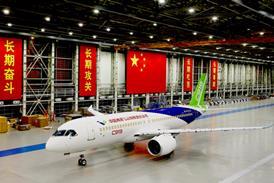Early in March the future of European air traffic management (ATM) will be clarified by the delivery of two significant framework documents that should enable Eurocontrol to hit the Single European Sky (SES) programme's accelerator.
"This will be a pivotal year for ATM in Europe", says Eurocontrol's new director general David McMillan.
One of the documents will be the proposed "second package" of SES legislation from the European Commission, the other will be the last two contracted "deliverables" from the Eurocontrol/industry research taskforce SESAR: namely the European ATM Master Plan, and the Work Programme for 2008-2013.
McMillan, who took over from Victor Aguado on 2 January, will have been given the tools to do the job, and whether he succeeds will depend on his skill at persuading and cajoling Eurocontrol member states, air navigation service providers (ANSP), airports, airlines and equipment manufacturers to work together to make it happen.
"One of the key things that strikes you when you come to a job like this," says McMillan, "is the very significant number of parties there are to all the decisions that are taken." He is speaking not only of his management task, but of how a complex machine like multinational ATM, if it is to be efficient, has to work organically through network-centric communications and collaborative decision-making.
He continues: "You need all those people taking part in the decision-making process to be properly informed in real time, so they can make the best decisions they can."
Eurocontrol, McMillan says, has been changing the way it operates from being prescriptive toward being co-operative, and pledges he will certainly continue and, if possible, accelerate this process, explaining: "Eurocontrol is a kind of multi-purpose tool available to all the key aviation stakeholders in Europe to improve the performance of the system - a kind of a Swiss army knife if you like.
"There has been a feeling that 'Eurocontrol is doing this to us', whereas what I want is for [stakeholders] to feel that they are part of Eurocontrol, they are taking part in the decisions here, that this is where people come to fix problems and to get things done. That's the message I've been pushing since I arrived here, and it seems to be resonating well."
McMillan says the change toward collaboration is an acknowledgement of the realities of modern ATM. Other essential parts of the formula he is pushing is transparency of everything from accounts to governance, and the belief that "the environment should be right up there, just below safety, as one of our prime objectives".
He adds: "Through research, we already have the knowledge and expertise to deliver this."
"This is a pivotal year for ATM in Europe," says McMillan, with the arrival of the SESAR Master Plan and the Commission's proposed SES legislative programme which, he points out, will generate plenty of debate as it progresses though Parliament and the Council of Ministers.
To understand why the SES legislation needs reframing, says McMillan, you have to look back to what was envisaged when the SES was first approved as a politically acceptable objective in 2001.
He poses the question: "What were the aims of the politicians at the time, and have they been delivered?" It was an effort to deal with a growing problem of delay, he says, a concern that there were no common standards against which ANSPs could be judged, and "there wasn't enough emphasis on service provision and performance".
McMillan adds that fundamental SES objectives, like defining and implementing functional airspace blocks (FAB), have also not been taking place as anticipated.
There is still a need, he insists, for "more emphasis on performance from the service providers, and more of a pan-European focus on managing and optimising the network". He takes the example of FABs: "There has been a lot of good work started, but not much of it is yet completed," he says.
But there is the promise of progress: "If you can get better management of adjoining parts of the airspace, that helps. People are beginning to ask: how do we join up the FABs, how do we develop the future European motorway system for aviation?" Airspace design will have to succeed, says McMillan, by "getting all the terminal control areas to connect up in the best possible way".
Meanwhile, McMillan says he has already met the European Aviation Safety Agency executive director Patrick Goudou to talk about the proposed transfer of safety regulation from Eurocontrol to the safety agency.
When that occurs, says McMillan, EASA will inherit a set of safety regulations that are "fit for purpose", and Eurocontrol will be able to concentrate on its task of facilitating the development of the European ATM network.
"One thing I have to say," McMillan states firmly, "is I have been very impressed by the level of commitment, professionalism, knowledge and expertise inside this organisation. Be in no doubt that Eurocontrol is a jewel in the European crown, and we should make full use of it. But there's a lot of expertise in the industry, so let's work together."
Source: FlightGlobal.com




















